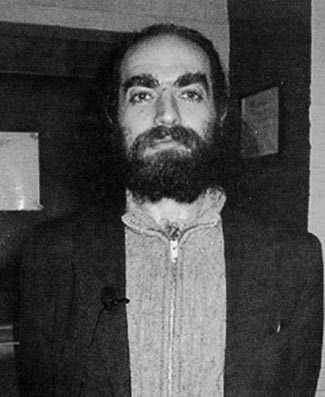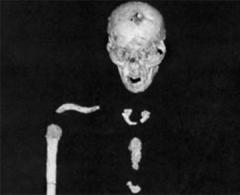
This Article From Issue
July-August 2007
Volume 95, Number 4
Page 352
DOI: 10.1511/2007.66.352
The Poincaré Conjecture. Donal O'Shea. x + 293 pp. Walker and Company, 2007. $26.95.
A mathematical conjecture is a precise mathematical statement that the formulator believes to be true and important to establish, but for which he or she has no proof. It is posed as a challenge to other mathematicians, and if it is important and difficult, it stimulates much mathematical development before being resolved. One of the most important conjectures in mathematics was formulated in 1904 by the leading mathematician of his day, Henri Poincaré. It was the central, defining problem in the field that he fathered—topology.

From The Poincaré Conjecture.
For the next 98 years, wave after wave of leading topologists attempted to solve the problem of finding a proof for the Poincaré conjecture. None of them succeeded, but their enormous efforts in this direction were not for naught, because the ideas they developed produced tremendous advances in topology. But through all of it, the Poincaré conjecture remained unapproachable, like the end of the rainbow.
Then in 2002 and 2003, Grigory Perelman, a reclusive Russian mathematician who had disappeared from view in the mid-1990s, posted on the Internet three preprints that claimed to prove the Poincaré conjecture and a great deal more. All the more exciting for mathematicians was the fact that his approach used deep ideas from outside topology. This was no frontal attack, but rather an approach that brought to bear the power of geometry and partial differential equations.
Notions of quantities such as distance, length, area and angles are the purview of geometry. Topology is the study of the underlying spaces that are devoid of these geometric notions. It is often referred to as "rubber sheet" geometry, to capture the idea that since there is no notion of distance and the like, one can deform the spaces, as one deforms a rubber sheet, without changing the topology. It took mathematicians centuries to realize that one could and should separate topological ideas from the more familiar geometric notions and that topology was a subject worth studying in its own right. Poincaré was a pioneer in this intellectual development, and the formulation of his conjecture came at the end of a series of long papers written between 1895 and 1904, papers considered to have launched topology as an independent subject within mathematics.
The 20th century was the century of topology. The subject came into its own, developed its own language and basic results, and attained the same footing as older, more established branches of mathematics such as number theory and geometry. Freeing topology from geometry and giving it an independent standing proved extremely valuable, even in the study of other, more geometric and analytic problems. In one of the great ironies of mathematics, it turns out that Perelman's solution to the Poincaré conjecture is achieved by recombining geometry and analysis with topology.
Donal O'Shea's beautifully written new book, The Poincaré Conjecture, begins with a quick tour of the history of ideas of geometry and topology that set the stage for Poincaré. O'Shea recounts how humankind came to understand that the Earth is round—that it is a "two-sphere," in the topological vernacular. (The prefix "two-" indicates that the surface of the Earth is two-dimensional.) There are analogous objects in higher dimensions—the three-sphere, the four-sphere and so on—but because they cannot be faithfully represented in our physical space, they cannot be directly "seen."
O'Shea goes on to trace the history of modern geometry and the mathematical giants who founded it in the second half of the 19th century—Carl Friedrich Gauss and Bernhard Riemann. He indicates that Riemann was the first to understand that topology could be separated from geometry to the benefit of both. Poincaré comes on the scene as the natural heir to Riemann and as the father of topology.
O'Shea explains that, following Gauss and Riemann, Poincaré had made a long study of two-dimensional spaces (surfaces). Being a powerful and original mathematician, he realized (as had Riemann before him) that there are vastly richer and more complicated analogues that are important to think about—namely, higher-dimensional spaces. In his 1895-1904 papers he established the basics of these spaces, proved some important results and then formulated his famous conjecture, which concerns how one can characterize the three-dimensional analogue of the sphere among all three-dimensional spaces. His conjecture (which turned out to be correct) was that if every loop in a given three-dimensional space can be deformed, keeping it in the space, until the loop collapses into a point, then that space must be a three-sphere. O'Shea briefly gives the story of some of the leading 20th-century topologists and their attacks on the Poincaré conjecture and its generalizations to higher dimensions.
Then O'Shea turns to the developments that eventually led to the positive resolution of the conjecture. In the 1980s William Thurston formulated a vast generalization of the Poincaré conjecture, which became known as Thurston's geometrization conjecture. It reestablished a key link between three-dimensional topology and very special kinds of nice (homogeneous) geometries. This set the stage for Richard Hamilton, who proposed a program for proving Thurston's conjecture and hence also the Poincaré conjecture. Hamilton's idea was to start with any geometry on the space and deform it—or, more precisely, evolve it—using a partial differential equation, analogous to the heat equation, until the geometry comes to rest at the especially nice one that Thurston conjectured must exist. Hamilton encountered difficulties in his program—singularities develop as the metric evolves, and these must be dealt with. This is where Perelman's revolutionary insights take over and push Hamilton's program to completion.
The depth and beauty of mathematics, the intellectual sweep and power of the ideas, are notoriously difficult, if not downright impossible, to explain to those who have no mathematical training and even to natural scientists, who do have extensive mathematical training. There are many reasons for this. Mathematics deals with abstract objects at ever-higher levels of abstraction. To deal with the abstraction and to keep the subject on the right track, mathematicians have developed a very precise language that is foreign to the nonspecialist.
Recently, there have been a few books that have managed to present some of the most spectacular mathematical advances in a way that makes them accessible to a wider audience and at the same time does justice to the mathematics. O'Shea's volume is one of these. He has a gift for metaphor and often is able to capture the essence of a mathematical development or idea without falling into the jargon of the discipline or impenetrable prose.
The Poincaré Conjecture is a fine example of mathematical writing for a general audience. Those with an interest in knowing what mathematics is about, in understanding mathematical ideas, and in tracing the history of famous mathematical problems should read it. No matter what their mathematical background, readers will find much to further stimulate their interest and will learn about both the history of mathematics and its most recent spectacular advances. The book should also be required reading for mathematicians, who will derive great pleasure from seeing their subject so well presented. It should serve as a model to inspire more good general writing by mathematicians, whose field has so much worth explaining and so few good expositors.

American Scientist Comments and Discussion
To discuss our articles or comment on them, please share them and tag American Scientist on social media platforms. Here are links to our profiles on Twitter, Facebook, and LinkedIn.
If we re-share your post, we will moderate comments/discussion following our comments policy.